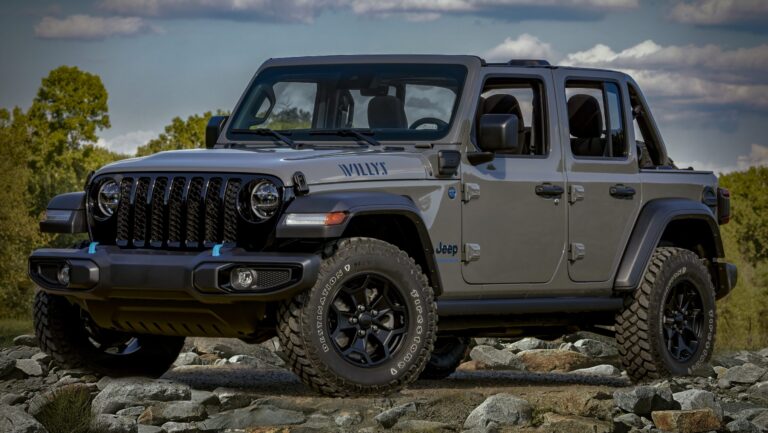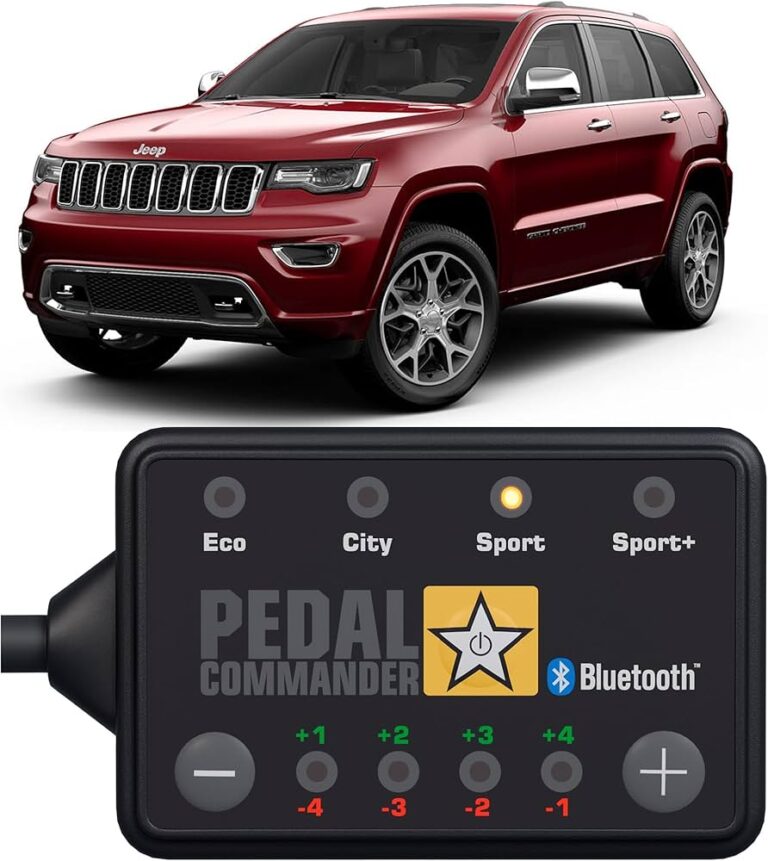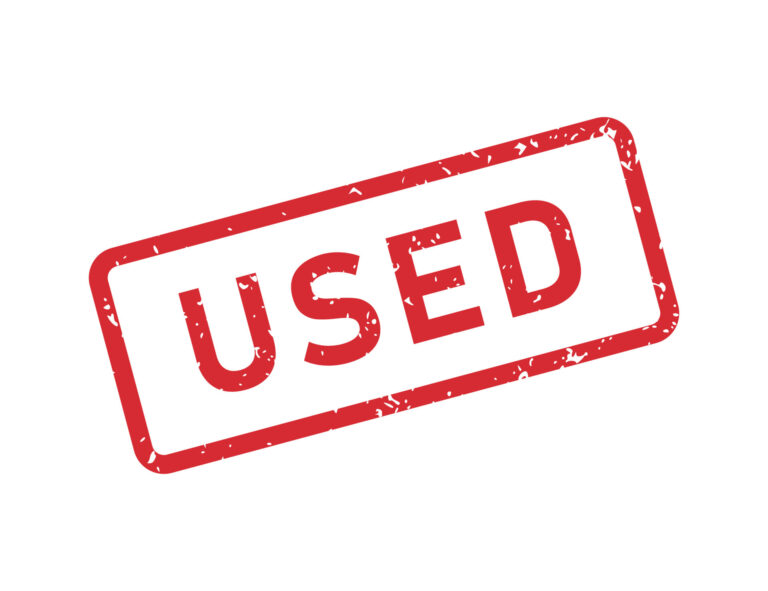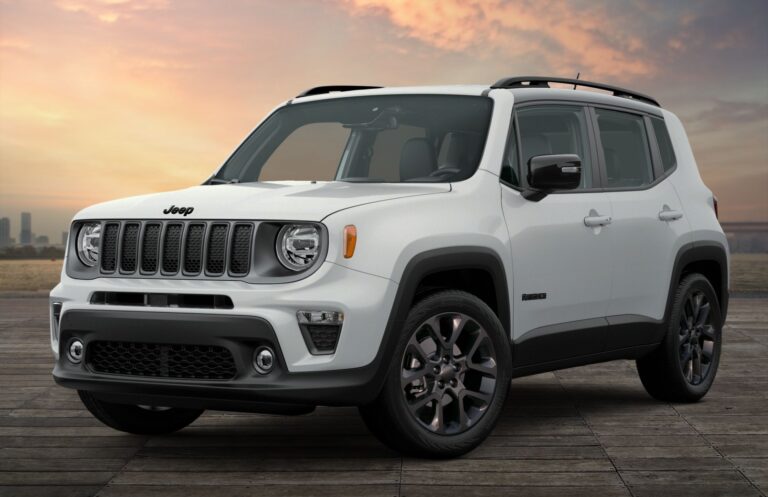Jeep Rubicon Front Axle For Sale: Unlocking Unrivaled Off-Road Capability
Jeep Rubicon Front Axle For Sale: Unlocking Unrivaled Off-Road Capability jeeps.truckstrend.com
For any serious off-road enthusiast or dedicated Jeeper, the name "Rubicon" conjures images of legendary trails, extreme capability, and rugged durability. At the heart of this reputation lies the robust axle system, particularly the front axle. When we talk about a "Jeep Rubicon Front Axle For Sale," we’re not just discussing a mere automotive component; we’re referring to a gateway to enhanced performance, greater reliability on challenging terrain, and the opportunity to transform a standard Jeep into a true rock-crawling beast.
This comprehensive guide delves into everything you need to know about acquiring a Jeep Rubicon front axle. Whether you’re looking to upgrade your non-Rubicon Jeep, replace a damaged axle, or embark on a custom build, understanding the nuances of these sought-after components is crucial. We’ll explore their unique features, the myriad reasons for their popularity, where to find them, vital considerations before purchase, and practical advice to ensure a successful acquisition and installation.
Jeep Rubicon Front Axle For Sale: Unlocking Unrivaled Off-Road Capability
Understanding the Legendary Jeep Rubicon Front Axle
What makes the Rubicon front axle so desirable? It primarily boils down to its inherent strength and factory-equipped features designed for extreme off-roading. Historically, Rubicon models (from the TJ era onward, but most commonly sought are JK and JL/JT axles) have been outfitted with Dana 44 axles front and rear. While the term "Dana 44" can be broad, the Rubicon specification significantly beefs up this foundation.
Key characteristics that set the Rubicon front axle apart include:
- Dana 44 Base: A stronger foundation compared to the Dana 30 found in many non-Rubicon models. It boasts larger ring and pinion gears and a more robust housing.
- Tru-Lok Electronic Locking Differentials: This is arguably the most significant advantage. With the push of a button, the Tru-Lok system electronically locks the differential, ensuring equal power delivery to both front wheels, regardless of traction. This is indispensable for navigating challenging obstacles, preventing wheel spin, and maintaining momentum.
- Enhanced Gearing: Rubicon axles typically come with lower (numerically higher) gear ratios from the factory, such as 4.10:1 or even 4.88:1 in some JL/JT models. These lower ratios provide increased torque to the wheels, ideal for crawling over rocks and accommodating larger tire sizes without compromising power.
- Larger Axle Tubes: While still a Dana 44, Rubicon front axles often feature slightly larger or thicker axle tubes than standard Dana 44s, contributing to their improved strength and resistance to bending under stress.
- Stronger Shafts: Factory Rubicon axles often come with stronger 30-spline axle shafts, better equipped to handle the stresses of off-road driving and larger tires compared to standard 27-spline shafts.

These combined features provide a distinct advantage for serious off-roaders, making the Rubicon front axle a premium choice for anyone aiming to push their Jeep’s capabilities beyond the pavement.
Reasons to Purchase a Rubicon Front Axle
The motivations behind seeking a Jeep Rubicon front axle for sale are diverse, yet all point towards a common goal: enhanced off-road performance and durability.
- Upgrade for Non-Rubicon Jeeps: This is perhaps the most common reason. Owners of Sport, Sahara, or other non-Rubicon trims often find their factory Dana 30 front axle insufficient for aggressive off-roading or larger tire setups. Swapping in a Rubicon Dana 44 provides a significant strength upgrade, along with the invaluable factory locker and appropriate gearing. It’s a comprehensive upgrade that drastically improves capability.
- Replacement for Damaged Axles: Accidents, severe off-road abuse, or component failure can lead to a bent or broken front axle. Sourcing a used Rubicon axle can be a cost-effective solution for replacement, particularly if the vehicle was already a Rubicon.
- Custom Build or Axle Swap: For those undertaking a full custom build, such as a rock crawler, trail rig, or even a highly modified overlander, a Rubicon axle provides a robust foundation. It saves the time and expense of building a strong axle from scratch and integrating a locking differential.
- Cost-Effectiveness (Compared to Aftermarket): While aftermarket performance axles (e.g., Dynatrac, Currie) offer even greater strength, their price tags can be prohibitive for many. A used Rubicon axle, especially from a low-mileage donor, offers a substantial upgrade at a fraction of the cost of a brand-new, purpose-built aftermarket unit.
- Maintaining OEM Compatibility: For those who prefer to stick with OEM parts for ease of maintenance or specific reasons, a used Rubicon axle fits seamlessly into the Jeep ecosystem.
Where to Find Your Rubicon Front Axle
Locating a suitable Rubicon front axle requires a bit of detective work and patience. Here are the primary avenues:
- Online Marketplaces: Websites like Craigslist, eBay Motors, and dedicated automotive classifieds are common starting points. Facebook Marketplace, particularly within Jeep-specific buy/sell/trade groups, is an excellent resource. These platforms often list axles from individuals parting out their Jeeps or from smaller repair shops.
- Dedicated Off-Road Forums & Communities: Websites like JK-Forum, JLWranglerForums, or JeepForum have classified sections where members frequently sell parts, including axles. These communities are invaluable as sellers are often fellow enthusiasts who understand the value and specifics of the parts they’re selling.
- Salvage Yards & Auto Recyclers: Specialized salvage yards that deal with Jeeps or 4x4s are prime locations. They acquire wrecked or totaled vehicles and strip them for parts. Calling ahead and inquiring specifically about Rubicon models is essential.
- Part-Out Companies: Some businesses specialize in buying wrecked Jeeps, disassembling them, and selling components individually. A quick online search for "Jeep Rubicon part out" can yield results.
- Aftermarket Retailers (New Crate Axles): While this article focuses on "for sale" which often implies used, it’s worth noting that companies like Mopar, Dynatrac, Currie Enterprises, and TeraFlex offer brand-new "crate" axles that are either OEM Rubicon replacements or stronger aftermarket alternatives built to Rubicon specifications. These are significantly more expensive but offer peace of mind with a warranty.
- Local Jeep Clubs & Word of Mouth: Networking within your local Jeep community can uncover hidden gems. Someone might be upgrading their own axle and selling their perfectly good Rubicon unit.
Key Considerations Before You Buy
Purchasing a used axle requires diligence. A thorough inspection and understanding of critical factors can prevent costly mistakes.
-
Condition is Paramount:
- Rust: Surface rust is common and often cosmetic, but heavy, flaky rust can indicate structural compromise.
- Bent Tubes: Inspect the axle tubes for any signs of bending, especially near the differential or outer ends. A straight edge can help.
- Knuckles & Ball Joints: Check for cracks in the knuckles. Worn ball joints are common but replaceable.
- Leaks: Look for oil leaks around the differential cover, pinion seal, and axle seals (inner and outer).
- Differential Health: If possible, rotate the pinion by hand to feel for smooth operation. Excessive play or grinding sounds are red flags. Ask for evidence of recent fluid changes.
- Locker Functionality: If buying a Rubicon axle, verify the Tru-Lok locker engages. This might require hooking it up to a 12V source if not in a vehicle.
-
Generation Compatibility (JK vs. JL/JT):
- JK Rubicon Axles (2007-2018): These are common and generally more affordable. They have a 5×5 bolt pattern.
- JL/JT Rubicon Axles (2018+): These are wider, often come with 4.88 gearing, and have different steering and suspension mounting points. While a swap is possible onto a JK, it requires significant modification (new steering, control arms, track bar, driveshaft, etc.). Ensure the axle matches your vehicle’s generation or that you’re prepared for the necessary modifications.
-
Gear Ratio: Crucially, ensure the front axle’s gear ratio matches your rear axle’s ratio. Driving with mismatched ratios will damage your drivetrain, especially in 4WD. Common Rubicon ratios are 4.10 (JK, some JL/JT) and 4.88 (JL/JT). If you’re upgrading a non-Rubicon, you’ll likely need to re-gear your rear axle to match.
-
Included Components: Clarify what comes with the axle. Does it include:
- Brake calipers, rotors, and pads?
- ABS sensors?
- Steering linkage (tie rod, drag link)?
- Ball joints?
- Control arm mounts and coil spring perches?
- The more complete it is, the more valuable, but also potentially more expensive.
-
Mileage and Usage History: While hard to verify, ask about the donor vehicle’s mileage and how it was used. An axle from a Jeep that saw light street duty is preferable to one from a heavily abused rock crawler.
-
Price vs. Value: Compare prices across different sellers and conditions. A cheaper axle might require more in repairs (ball joints, seals, possibly differential work), while a more expensive one might be ready to bolt in. Factor in potential shipping costs.
The Purchase Process: A Step-by-Step Guide
- Define Your Needs & Budget: Determine exactly what generation of axle you need, your desired gear ratio, and your maximum budget, including potential shipping and installation costs.
- Locate Potential Sellers: Utilize the resources mentioned above. Set up alerts on marketplaces if possible.
- Initial Inquiry & Questions: Contact sellers with specific questions about the axle’s condition, mileage, gear ratio, and what components are included. Request detailed, high-resolution photos or even a video tour.
- Arrange Inspection: If local, arrange an in-person inspection. Bring a flashlight, a straight edge, and even a friend who knows Jeeps. If remote, ask for a video call and have the seller show you specific areas.
- Negotiation: Most prices are negotiable, especially for used parts. Be polite but firm, and be prepared to walk away if the price or condition isn’t right.
- Logistics: For large items like axles, discuss pickup versus freight shipping. Freight can be expensive (see table below), so factor this into your budget. Ensure the seller can properly package and palletize the axle for shipping.
- Payment & Receipt: Use secure payment methods. Get a written receipt detailing the purchase, condition, and included components.
Installation Tips and Post-Purchase Care
Once you have your Rubicon front axle, the journey isn’t over. Proper installation and subsequent care are crucial.
- Professional vs. DIY: Axle swaps are complex and require specialized tools (jack stands, engine hoist/transmission jack, torque wrench, impact gun, etc.). If you’re not an experienced mechanic, consider professional installation. It ensures proper alignment, torque, and safety.
- Pre-Installation Refresh: Even if the axle looks good, it’s wise to replace common wear items before installation:
- Ball Joints: Almost always replace these.
- U-Joints (Axle Shafts): Inspect and replace if there’s any play or rust.
- Axle Seals: Replace inner and outer seals to prevent leaks.
- Pinion Seal: Inspect for leaks and replace if necessary.
- Differential Fluid: Always drain the old fluid and refill with fresh, high-quality gear oil.
- Component Swaps & Adjustments:
- Brake Lines: You’ll likely need to transfer or replace brake lines.
- Steering: Depending on the swap, you might need new tie rod, drag link, or track bar.
- Driveshaft: Ensure your front driveshaft is compatible and the correct length.
- ABS Sensors: Transfer your old sensors or buy new ones if the axle didn’t come with them.
- Locker Wiring: If swapping into a non-Rubicon, you’ll need to wire up the Tru-Lok locker. Aftermarket wiring kits are available.
- Alignment: After installation, a professional alignment is mandatory to ensure proper steering and tire wear.
- Break-in Period: If you replaced the ring and pinion or the axle is "new to you," follow a break-in procedure for the gears, typically involving several short drives with cool-down periods.
- Regular Maintenance: Check differential fluid levels regularly, inspect for leaks, and periodically check ball joint and U-joint play.
Jeep Rubicon Front Axle Estimated Price Guide
Please note that these prices are estimates and can vary significantly based on condition, mileage, included components, seller, location, and market demand. Shipping costs are additional and can be substantial.
| Component/Condition | JK Rubicon Front Axle (Used) | JL/JT Rubicon Front Axle (Used) | New Aftermarket "Rubicon-Spec" Crate Axle (e.g., Dynatrac, Currie) | Notes |
|---|---|---|---|---|
| Complete Axle (Used, Good Condition) | $2,000 – $3,500 | $3,500 – $6,000 | N/A | Includes differential, shafts, lockers, knuckles, often some steering components and brakes. Most common purchase. Condition is paramount. |
| Complete Axle (Used, Excellent/Low Mileage) | $3,500 – $4,500 | $6,000 – $8,000+ | N/A | Highly sought after, often from low-mileage accident vehicles. Minimal wear on components. |
| Aftermarket "Rubicon-Spec" Crate Axle (New) | N/A (for direct OEM JK replacement) | N/A (for direct OEM JL/JT replacement) | $7,000 – $15,000+ | Brand new, often stronger than OEM, can be custom ordered with specific gear ratios, locking differentials, and upgraded components. Available for both JK and JL/JT platforms. |
| Included Components (Affects Price) | Brakes, Steering, Ball Joints, ABS Sensors | Brakes, Steering, Ball Joints, ABS Sensors, Electronic Disconnect (JL/JT) | Varies by manufacturer (often bare but can be optioned with brakes/steering) | The more complete the assembly, the higher the price. Always confirm what’s included. |
| Common Gear Ratios (Factory) | 4.10 | 4.10, 4.88 | User Selectable | Crucial to match your rear axle ratio. |
| Condition Impact | Rust, bent tubes, worn components (ball joints, U-joints), leaks, locker function significantly affect price. | Rust, bent tubes, worn components (ball joints, U-joints), leaks, locker function significantly affect price. | N/A | Axles requiring significant repair (e.g., bent tube, broken differential) will be much cheaper, but the repair costs will quickly outweigh initial savings. |
| Shipping Costs (Freight) | $300 – $800+ (within contiguous US) | $300 – $800+ (within contiguous US) | Varies by manufacturer/shipping method | Axles are heavy and bulky, requiring freight shipping. Always get a shipping quote before committing to a remote purchase. Some sellers may offer local pickup, saving significant costs. |
Frequently Asked Questions (FAQ)
Q: What’s the main difference between a Rubicon axle and a non-Rubicon axle?
A: The primary differences are the Rubicon’s stronger Dana 44 housing (compared to a Dana 30), factory electronic locking differentials (Tru-Lok), and lower (numerically higher) gear ratios, which are all designed for enhanced off-road capability.
Q: Can I put a JK Rubicon front axle on a TJ/LJ or a JL/JT?
A: Swapping a JK axle onto a TJ/LJ is a common upgrade but requires significant fabrication due to different mounting points, width, and steering geometry. Swapping a JK axle onto a JL/JT is generally not recommended due to significant differences in width, suspension mounts, and electronics. It’s best to match the axle generation to your Jeep’s generation or be prepared for extensive modifications.
Q: Do Rubicon axles always come with lockers?
A: Yes, all factory Jeep Rubicon models come equipped with electronic locking differentials (Tru-Lok) in both the front and rear axles. If a "Rubicon axle" is being sold without a locker, it likely means the locker was removed or is non-functional, or it’s not a true factory Rubicon axle.
Q: What gear ratio should I look for?
A: You must ensure the front axle’s gear ratio matches your rear axle’s ratio if you plan to use 4WD. Common Rubicon ratios are 4.10 (JK, some JL/JT) and 4.88 (JL/JT). If you’re upgrading from a non-Rubicon with higher gears (e.g., 3.21, 3.73), you will need to re-gear your rear axle to match the new front axle’s ratio.
Q: How much does it cost to install a Rubicon front axle?
A: Installation costs vary widely based on your location, the shop’s labor rates, and the complexity of the swap (e.g., matching generations vs. cross-generation). Expect labor costs to range from $800 to $2000+, not including parts like new ball joints, seals, or potential driveshaft modifications.
Q: Should I buy a new crate axle or a used one?
A: A new crate axle offers a warranty and peace of mind, often with upgraded components, but at a significantly higher cost. A used axle is much more affordable but requires careful inspection and potentially some refurbishment (ball joints, seals). Your budget and comfort with mechanical work will dictate the best choice.
Q: What should I inspect for before buying a used axle?
A: Look for signs of bent tubes, heavy rust, leaks around seals and the differential cover, excessive play in the ball joints or U-joints, and any damage to the knuckles. If possible, verify the locker engages by applying 12V power to its solenoid.
Conclusion
Acquiring a Jeep Rubicon front axle for sale is a strategic move for any Jeeper looking to significantly enhance their vehicle’s off-road prowess. With its factory Dana 44 strength, electronic locking differential, and advantageous gear ratios, it transforms a capable Jeep into an unstoppable one. However, the path to a successful acquisition demands careful research, diligent inspection, and an understanding of the nuances involved in such a critical component.
By leveraging the right resources, asking the pertinent questions, and exercising caution, you can secure a valuable upgrade that will unlock new levels of capability and confidence on the trails. An informed decision today will lead to countless adventures tomorrow, proving that the investment in a Rubicon front axle is truly an investment in your off-road future.




